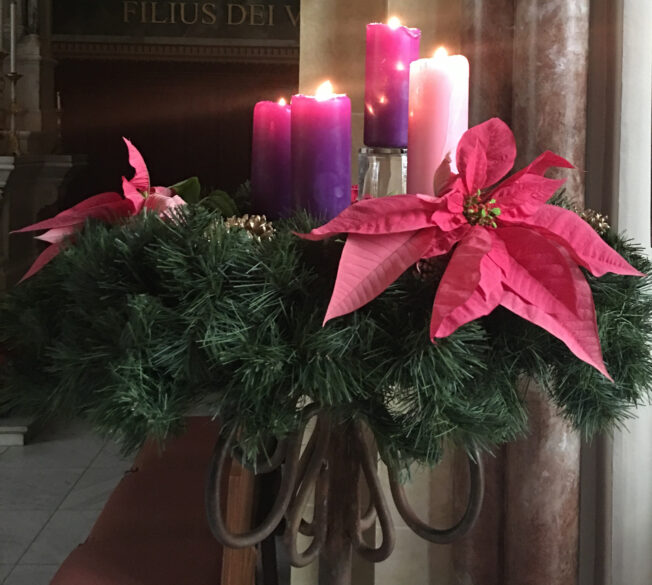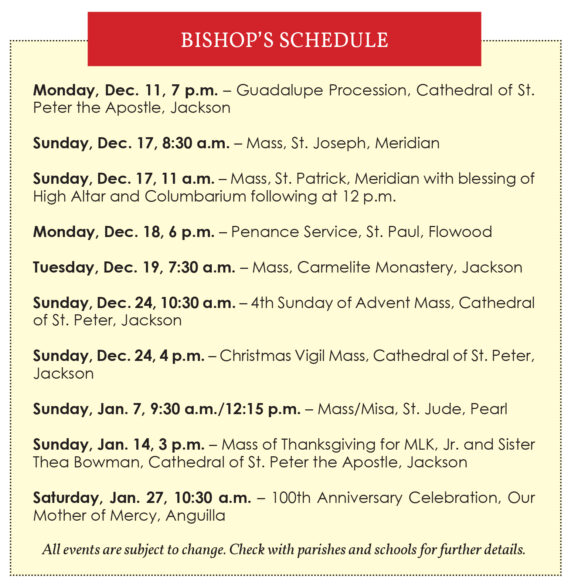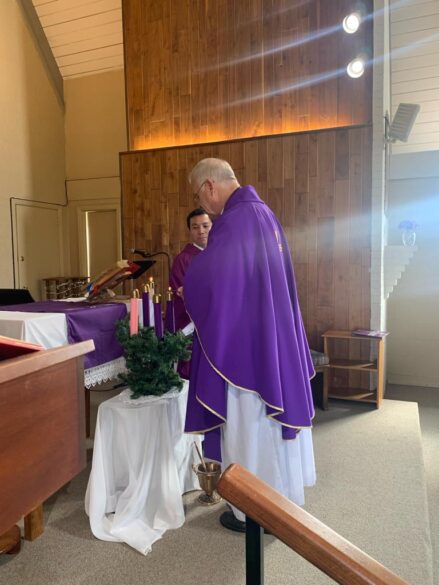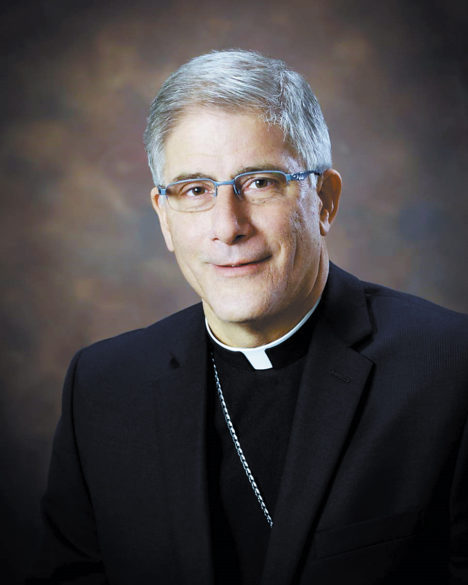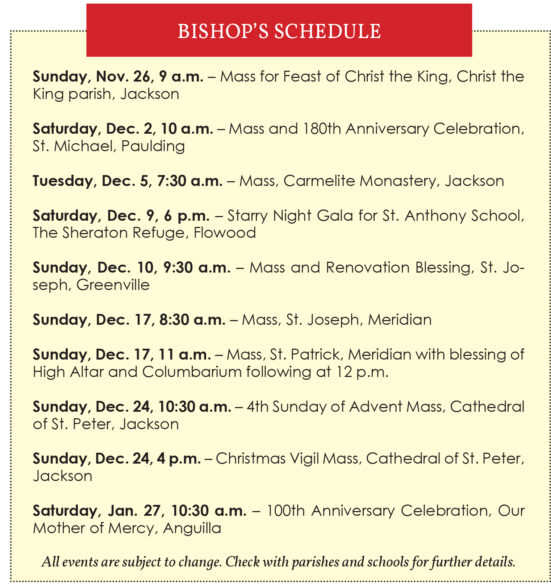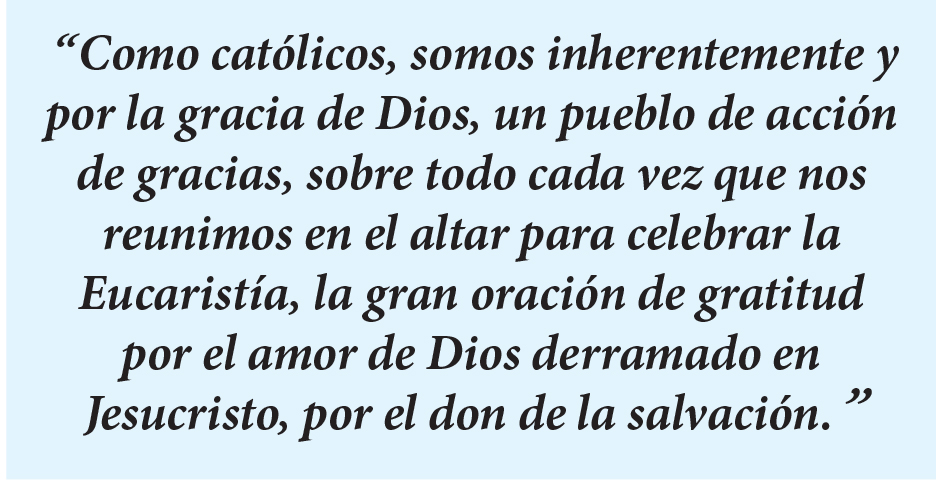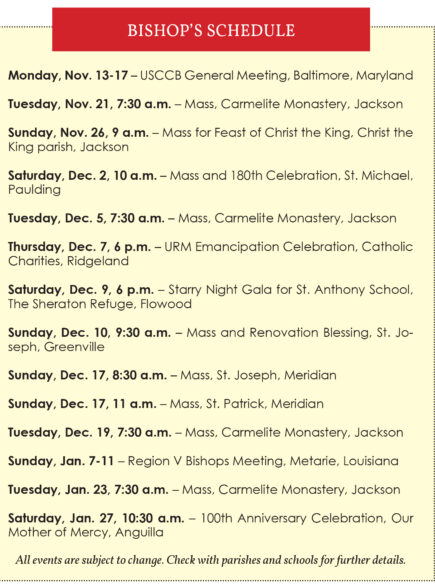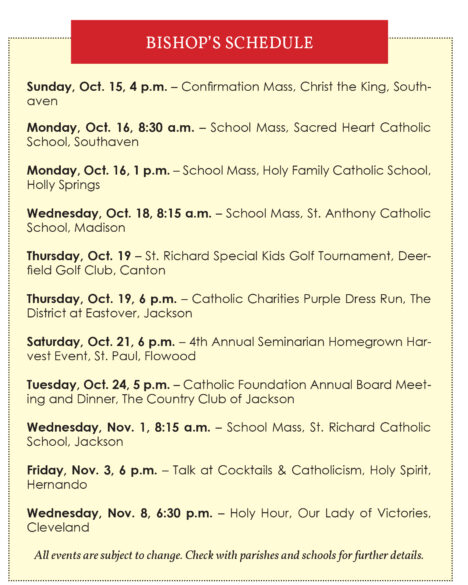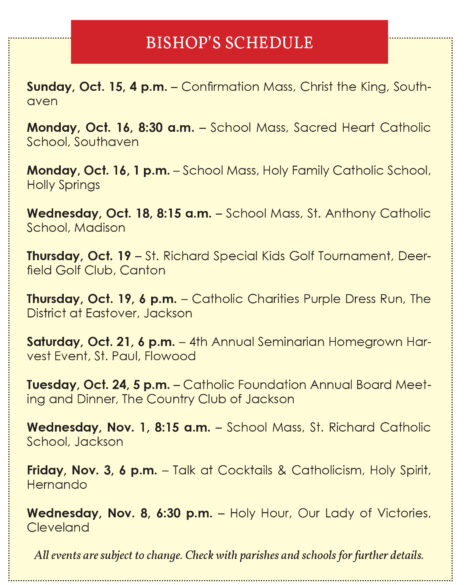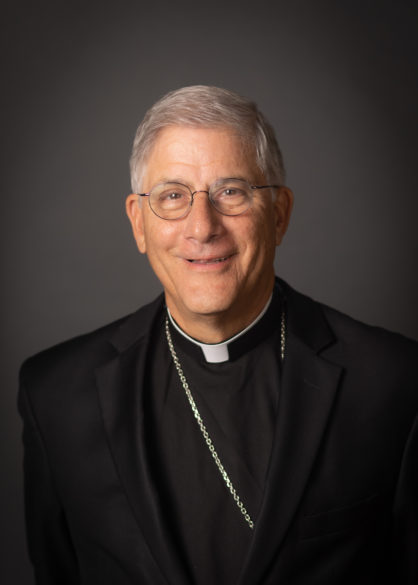
Por Obispo Joseph R. Kopacz, D.D.
“¡¡Tarde te amé,hermosura tan antigua y tan nueva,tarde te amé! Tú estabas dentro de mí, y yo fuera,y por fuera te buscaba, y deforme como era me lanzaba sobre las cosas hermosas por Ti creadas.Tú estabas conmigo, y yo no estaba contigo. Me retenían lejos de Ti todas las cosas,aunque, si no estuviesen en Ti, nada serían. Llamaste y clamaste, y rompiste mi sordera. Brillaste y resplandeciste, y pusiste en fuga mi ceguera. Exhalaste tu perfume, y respiré, y suspiro por Ti. Gusté de Ti, y siento hambre y sed. Me tocaste, y me abrazó tu paz.”
Estas palabras llenas de asombro de San Agustín del Libro 10 de sus Confesiones son en verdad siempre antiguas y siempre nuevas. Son eco de las voces que nos han convocado a preparar el camino al Señor, cuya eterna belleza brota en San Agustín. Isaías y San Juan Bautista en nombre del Dios vivo, han llamado y gritado para romper nuestra sordera. A través de ellos Dios resplandece, brilla y disipa nuestra ceguera.
Ambos profetas nos llevan de manera extraordinaria a la presencia de la luz del mundo, Jesucristo, el Hijo de Dios, una vez más esta Navidad. Las palabras del profeta Isaías son el origen antiguo de la experiencia liberadora de San Agustín casi un milenio después.
“El espíritu del Señor está sobre mí, porque el Señor me ha consagrado; me ha enviado a dar buenas noticias a los pobres, a aliviar a los afligidos, a anunciar libertad a los presos, libertad a los que están en la cárcel; a anunciar el año favorable del Señor.” (61:1-2)
Fue y es la voz de Dios que llama a personas y a un pueblo a salir de las tinieblas al maravilloso amor del Salvador. A través de la fe y el bautismo, somos ungidos por el Señor y, por lo tanto, estamos encargados de ser portadores de la Buena Nueva a través de la singularidad de nuestras vidas y las circunstancias de la generación actual. El regalo debe ser compartido y las oportunidades son infinitas.
A continuación, nos dirigimos a María, muy favorecida, la elegida llena de gracia que se vio envuelta en la belleza y la potencia del amor de Dios y por eso exclamó de puro gozo.
“Mi alma proclama la grandeza del Señor; mi espíritu se regocija en Dios, mi Salvador, porque ha mirado la humildad de su esclava”.
Dios la tocó y ella ardió en su paz. Juan Bautista, el último profeta del Antiguo Testamento y nuestro guía durante el Adviento, que saltó de alegría en el vientre de su madre Isabel en el momento de la visita de María, estaba perfectamente alineado con el tan esperado Mesías como “la voz de uno que clama en el desierto preparando el camino del Señor”. (Juan 1:23) Este puente hacia el Reino de Dios sabía que él era la voz, no la luz, no la Palabra hecha carne, sino la voz que convocaba a las personas a prepararse para la eterna belleza y el poder de Dios que estaba amaneciendo sobre ellos.
San Pablo animó a los primeros cristianos de Tesalónica a “estar siempre alegres, orar sin cesar y dar gracias en todo”. (1 Tesalonicenses 5:16-18)
¿Cómo es posible esto ante tanto sufrimiento en nuestra época?, podría preguntarse cualquier persona razonable.
En Adviento nos atrevemos a tener esperanza; nos atrevemos a soñar y cantamos: “Oh ven, oh ven Emanuel”, nombre que significa “Dios con nosotros” (Mateo 1:23) y para quien nada es imposible. (Lucas 1:37) Que el Señor, con San Agustín, rompa nuestra sordera, disipe nuestra ceguera y nos inspire a experimentar profundamente su belleza, que es don puro, siempre antiguo, siempre nuevo. Ven, Señor Jesús y disipa las tinieblas de nuestros corazones y mentes.
!Feliz Navidad en la Luz y el Amor de Jesucristo!


